Europe 1200 to 500 BC
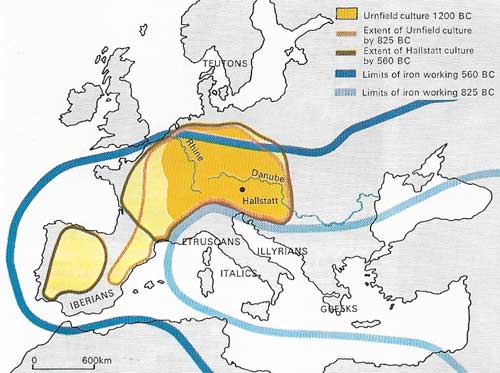
Figure 1. The Urnfield culture developed around the Danube and Rhine any by 825 BC had reached Spain. The Hallstatt culture, which began in the same place and superseded the Urnfield, by 560 BC covered most of Spain and Portugal. By then iron working, introduced from the east, had spread through most of Europe. The Hallstatt culture is named after a key archeological site in Austria.
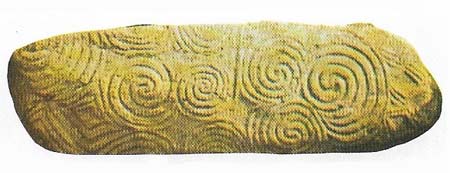
Figure 2. In Irish tradition this stone with its spiral designs marked an entrance to the "otherworld". It dates from c. 2500 BC, foreshadowing Celtic designs of some 2,000 years later.
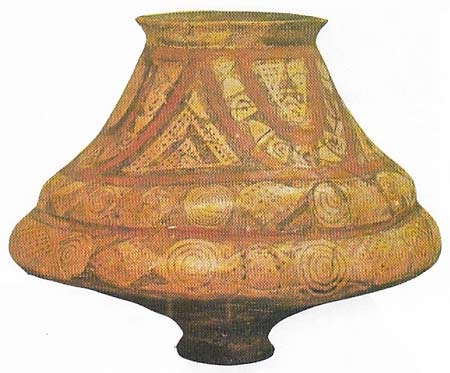
Figure 3. Hallstatt ceramic skill and restrained decorative elegance are shown in this painted pottery urn from Burrenhof, Germany, dating from about 620 BC.
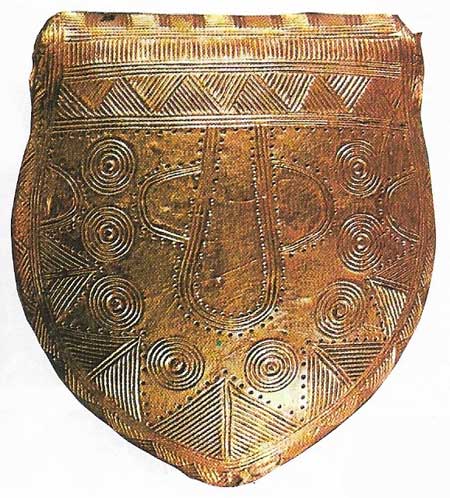
Figure 4. Irish goldsmiths made this gold-plated lead pendant about 800 BC.
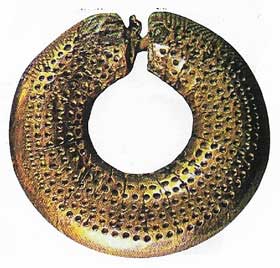
Figure 5. Later Celtic symmetry is seen in a gold-plated Irish ring of about 1000 BC.
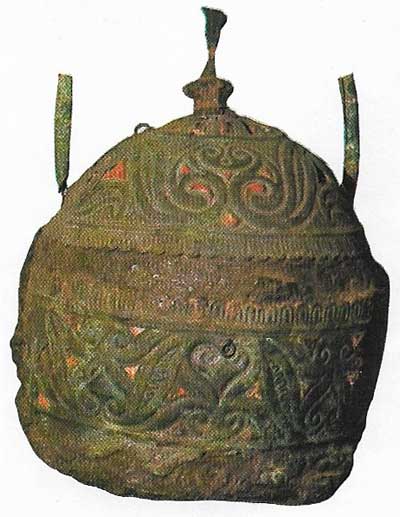
Figure 6. Warfare, whether as necessity or as an aristocrat sport, dominated most aspects of Celtic culture. Emphasis was laid not only on efficient weapons but also on the appearance of the warriors. Although not usually worn into battle, helmets were popular headgear. This bronze helmet from Italy probably dates from the Hallstatt period and is a particularly fine example of Celtic work.
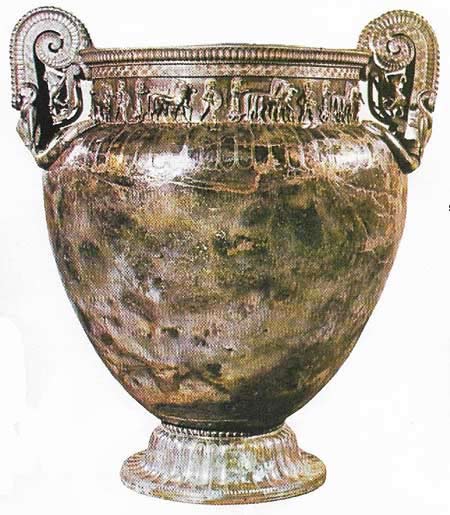
Figur 7. A Greek bronze crater for mixing wine, weighing 208 kilograms (460 pounds), was found in the burial of the priestess at Vix. It shows that as early as the 6th century BC the Celtic and Mediterranean worlds were in close contact. This may have been a gift of peace, friendship, or trade.
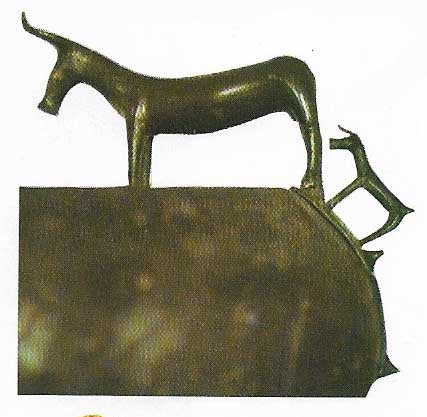
Figure 8. The Celts were skilled metalworkers. They introduced iron into northern Europe by 800 BC but continued to use bronze with exquisite results. This detail of a bronze bowl handle from the 6th century gives some indication of the sophisticated craftsmanship of the Hallstatt culture.
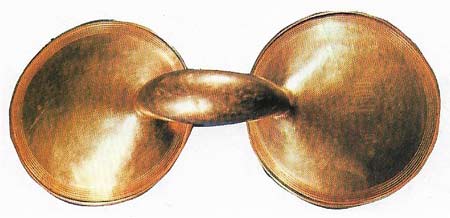
Figure 9. This gold dress-fastener from County Galway (Castlekelly) in Ireland dates from about 700 BC and measures 28 centimeters (11 inches) across. Such objects not only provide proof of Celtic pride in personal ornamentation but also reveal the exquisite skill and harmony of Celtic craftsmen and their predecessors in their use of various metals as a medium of their art.
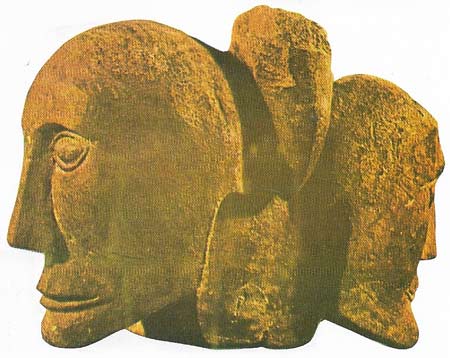
Figure 10. The severed head – the true godhead – with one, two, or three faces was the supreme object of Celtic worship. This Janus head from a sanctuary in France about 250 BC looks back and also forward, possibly to the "otherworld".
By 1200 BC the Bronze Age was fully mature among the Urnfield peoples, predecessors of the Celts who were by 800–700 BC to become the dominant and most progressive element in European society for several hundred years. The Urnfield peoples lived north of the Alps and belong to the prehistoric phase of European evolution; their name was given to them by archeologists because they introduced a new burial rite into Europe. Burial in barrows was replaced by cremation, the burnt bones then being placed in an urn and interred in large flat cemetries or Urnfields.
Technological revolution
With some exceptions – Basques, Finns, Iberians – the Europeans were of Indo-European origin and thus had linguistic and cultural traditions in common. The Urnfield peoples, who were farmers living in villages or large homestead complexes, may have spoken some form of Celtic dialect as the distribution of their monuments corresponds with the oldest recognizable Celtic place-names. These Urnfield peoples are generally regarded as being "proto-Celtic" and there seems to be little difference between them and their immediate descendants, the Celts of the Hallstatt culture.
The Urnfield period saw not only improved agriculture in Europe but also great developments in metalworking. It was a time of expansion and of warfare, and archaeological evidence shows that the central Europeans possessed quite sophisticated bronze weapons. Towards the end of the period, about 800 BC, Europe experienced a major technological revolution initiated by the Celts. They introduced the use of iron into Europe north of the Alps, and with it all the superiority in weapons and edge tools which the use of iron made possible. The areas of initial development coincide closely with Urnfield settlements in the Danube and Rhine regions.
Apart from evidence of some contact with people from the Steppes, everything suggests a continuity of the indigenous population enriched and empowered by the discovery of iron. This first phase of Celtic culture is known to archaeologists as Hallstatt after a village in the Salzkammergut in Austria.
The Hallstatt site has provided dramatic and comprehensive evidence about the early Iron Age in Europe. The community there derived much of its wealth from large salt mines. Both the preserving and healing powers of salt were recognized at an early stage. But it was also a valuable trading commodity, being perhaps the chief export from the Hallstatt Celts to the Greco-Etruscan world. Evidence from many sites points to the importance of this trade which passed between the two regions through Greek colonies in the northern Mediterranean. A leading colony was Massalia (Marseille) which was founded about 600 BC.
Workers and aristocrats
The equipment, dress, foods and eating habits of workers are all too often unknown in a society solely concerned with its aristocracy, the wealth of which is attested by the richness of the burials. Clothing and leather helmets have been preserved at Hallstatt. Their wooden bowls and other eating utensils have remained intact and numerous seeds and fruit stones provide some indication of their typical diet.
Information about the aristocrats comes from a vast cemetery which points to great changes in burial customs and personal equipment coinciding with the development of a culture based on iron, a more abundant metal and cheaper for practical purposes than bronze. Chieftains were no longer cremated and placed in humble urns but were buried with much pomp.
Burial ceremony
The richest graves consisted of a wooden chamber, usually of oak and covered by a mound decorated by a commemorative stone figure, sacred tree, or stone pillar. The deceased was placed under his status symbol, a four-wheeled wagon. Horse trappings were present, but there seems to be no evidence for the burial of the horses themselves; perhaps they were sacrificed to the gods and ritually eaten, or burnt. All the warrior's fine military equipment was placed in the tomb with him – his sword and spear, helmet, neck and arm ornaments and other things he had valued. Pots no doubt fall of ale or imported wine for the "other world" feast, and joints of meat were laid beside him to sustain him on his journey. According to the Old Irish tales, once the actual burial rite was completed, the ceremony would be followed by feasting and funerary games.
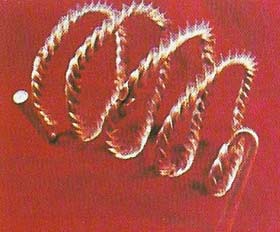 |
| A gold armband from Dover of about 1000 BC anticipates Celtic work. |
The Hallstatt period lasted until about 500 BC and laid the foundations for the full flowering of Celtic culture in Europe at that time. There was some intermarriage with the Teutonic peoples to the north – both Teuton and German are Celtic names – and the Celts were probably overlords, making up the aristocracy of these closely related peoples. The Hallstatt phase of the Celts manifested itself deep into Spain. Hallstatt art (Figures 3, 6, 7 and 8) tended to be linear, influenced by Greek Geometric, the naturalism of Urnfield bird and animal art, and old indigenous motifs, magical and symbolic. It was to become an important element in the magnificent magico-religious art (Figure 10) of the La Tene period that followed, and in the important contribution of Irish art (Figures 4, 5 and 9) to the Western Church in early Christian times.
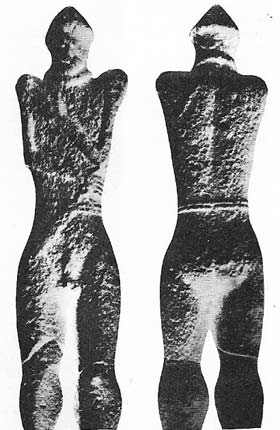 |
| This stone statue of a Hallstatt warrior or divinized hero, dates from the end of the 6th century BC. The figure was found on a Hirshlanden burial mound, broken where it had fallen. The cult of graves and ancestors was strong among the Celts and this anthropomorphic figure links the prehistoric world with that of the historical Celtic world in all its flourishing vigor. In this sense, it epitomizes all that had gone before and anticipates the strength of Celtic culture in its later phase. The Hallstatt peoples had close trade links with the Etruscans, another important bronze-using culture. |
